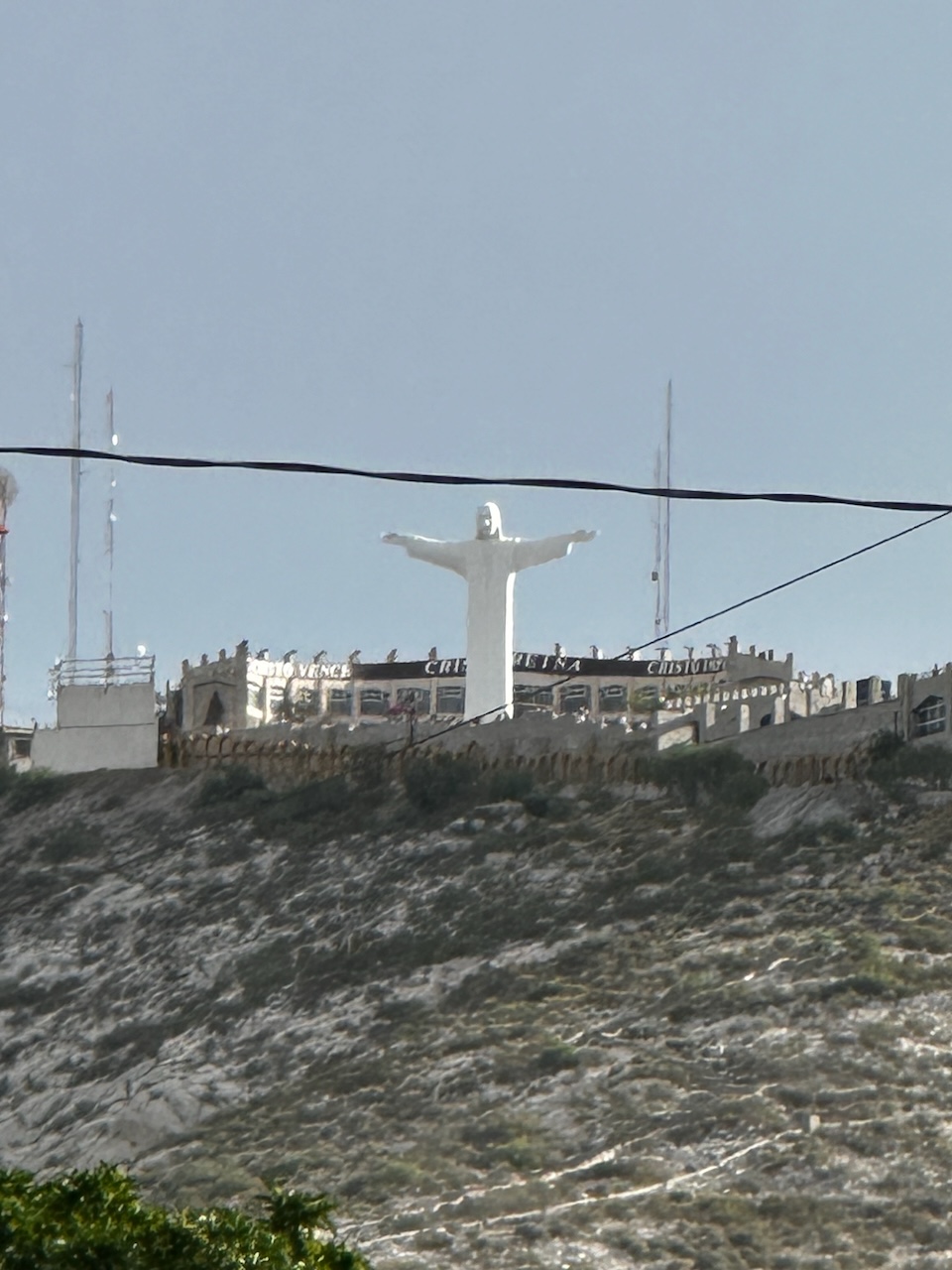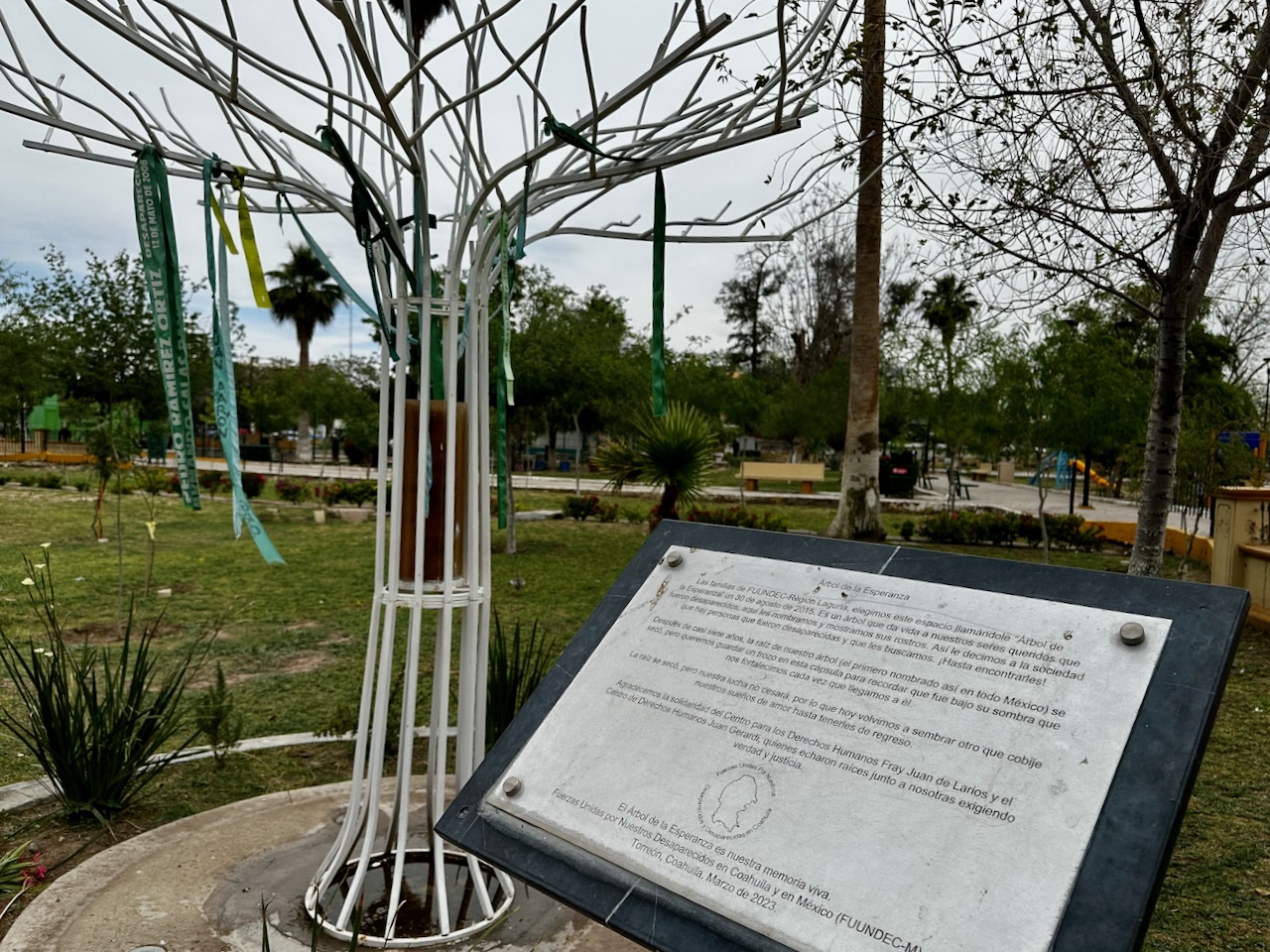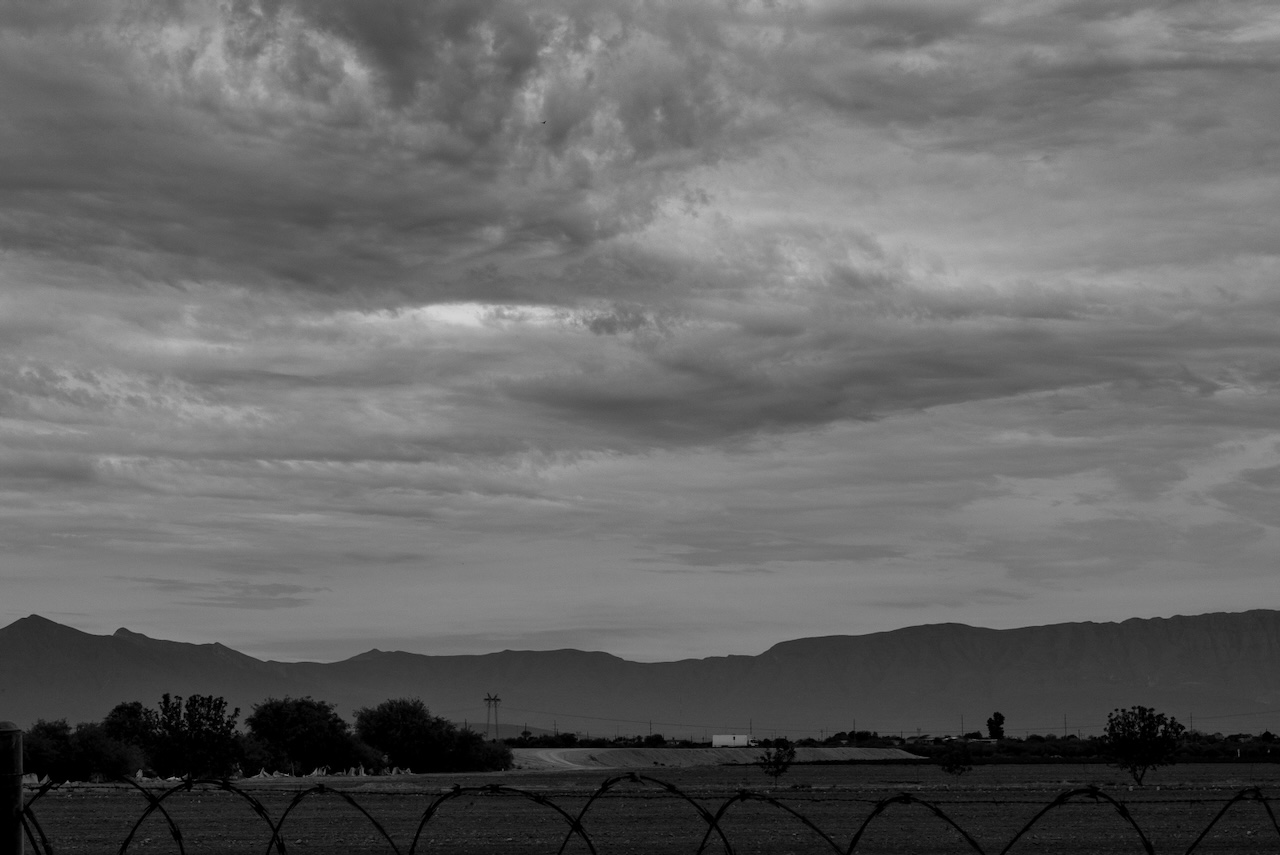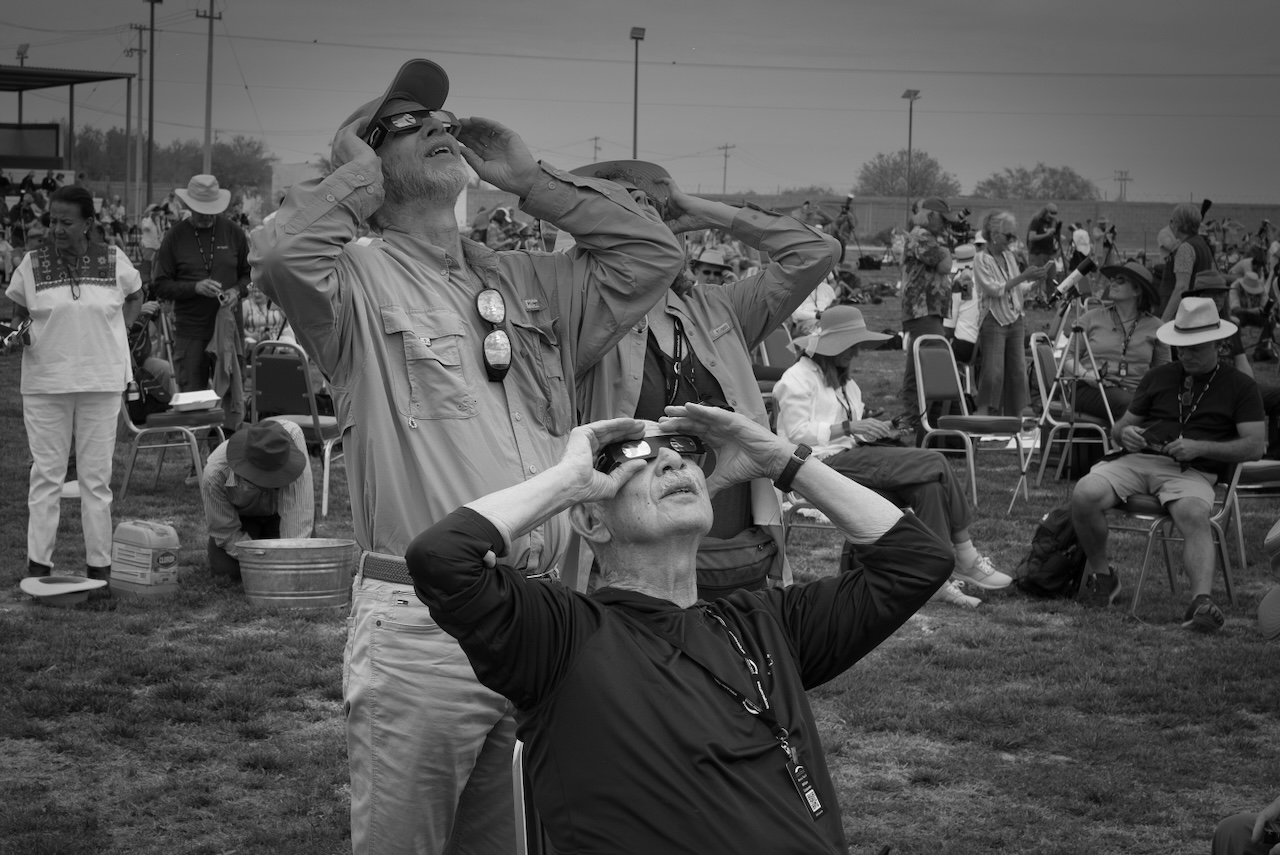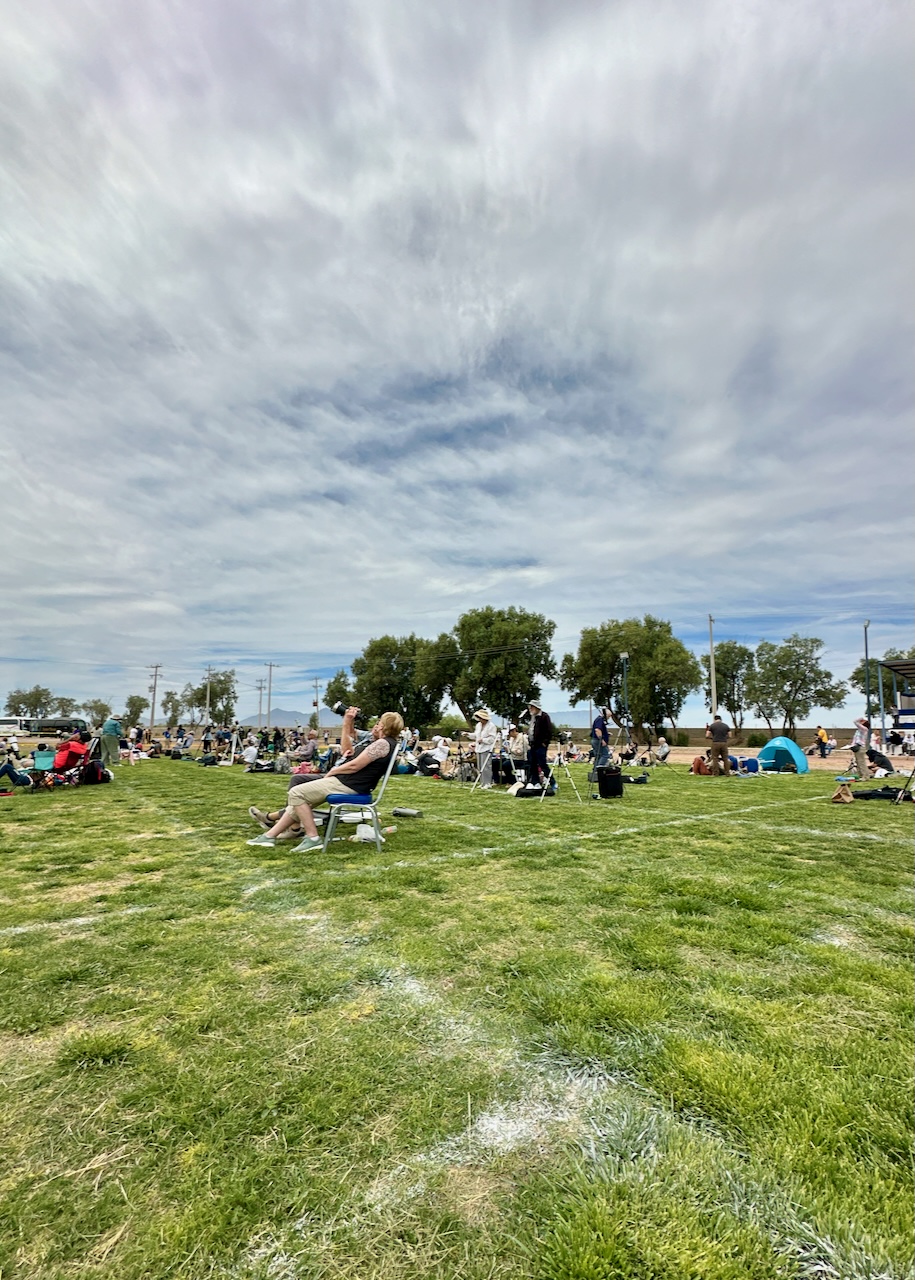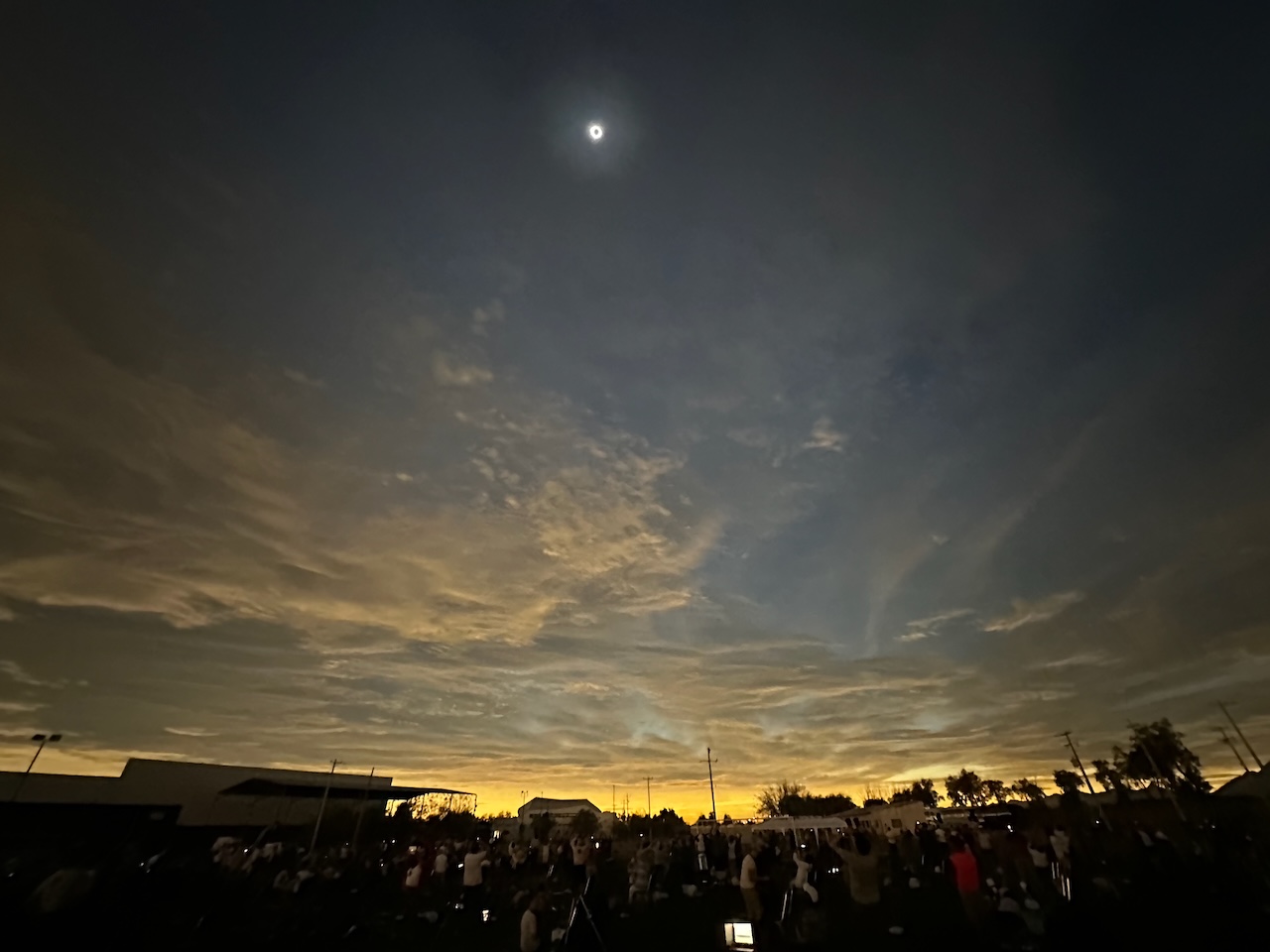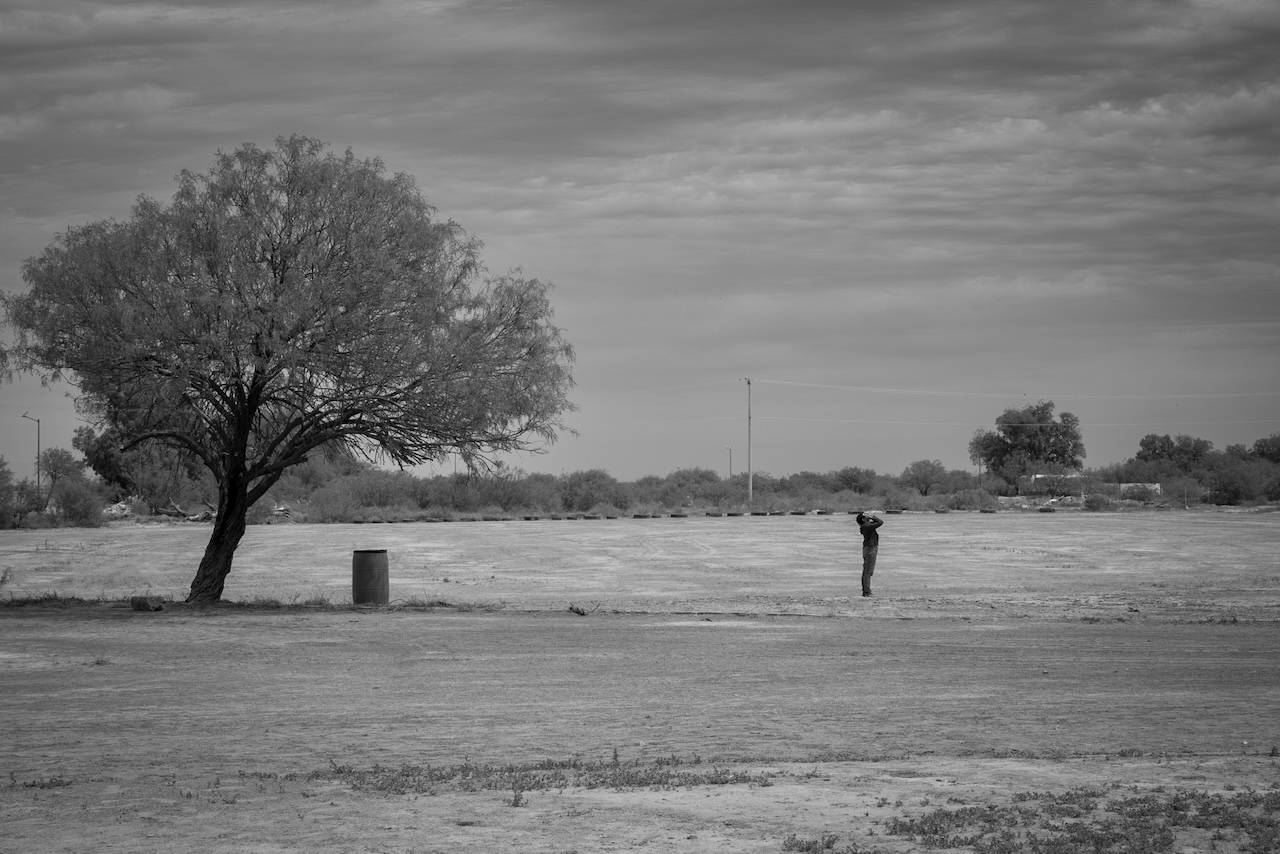April 21, 2024
I’ve never spent so much time intently studying clouds.
On Saturday, April 6, 2024, I was on a bus with thirty-four other science fans headed to Torreón, Mexico for the upcoming total solar eclipse. We had each booked this tour with Astro Trails, a company specializing in eclipse travel, months or years in advance. Astro Trails had selected the eclipse observation site in the middle of the Chihuahuan desert because it had the lowest likelihood of cloud cover on eclipse day. However, “climate” is not “weather,” and two days before the eclipse, the weather forecast was clouds. As the bus rolled towards our destination, I kept my eyes on the sky instead of on the wide open landscape, as if I could spy some omens that would let me know if the patches of white would in fact thicken over the next few days or if they would clear out. Could I read omens in the sky to reassure myself that trip was worth it?
We got to Torreón after sunset on Saturday. Sunday, we had a day to see the city. There isn’t much to see. On the positive side, Torreón has the third largest Jesus statue in Latin America.
On the more somber side, it also has several memorials to people who had vanished in the city’s bloody struggle with the Zeta cartel. In the daylight, I walked through the city on my own, until a small woman ran over to me to warn me that I’d wandered into an unsafe part of town, and I’d be better off staying a few blocks north. I decided I’d seen all I needed to see of Torreón and spent the remainder of the day resting in the hotel.
Monday: Eclipse day. We boarded our bus early for the drive to the observation site, an agricultural college about an hour north of the city. For a while, we kept pace with a freight train also heading north; riding in the open, on the top of each freight car, huddled dozens of people — people from Central America on their way to test their luck at the US border. I kept staring at the patchy clouds in the sky. Would they thicken, dissipate, or stay the same?
We arrived at the observation site about two hours before the start of the partial eclipse, giving people plenty of time to claim spots on the soccer field and set up whatever tripods, telescopes, and cameras they had brought. Some people had pretty impressive rigs, including tripods with motorized mounts that could swivel to keep the sun in view as it moved through the sky. Others, like me, traveled light.
By the time the partial eclipse started, “patchy clouds” had turned simply into “clouds.” Nearly from horizon to horizon, the sky was dreary, mottled gray. Occasionally, a lighter patch of cloud would move over the sun. I’d hear people around me go “ooh,” but by the time I put my eclipse glasses on and looked up, the sun was hiding behind dark clouds again and I could see nothing. I resorted to lying down on the grass of the soccer field, my eyes pointed up, eclipse glasses on, staring calmly and meditatively at the darkness for minutes at a time so when a fleeting half second of crescent star appeared, I could see it.
I’d seen the total solar eclipse in 2017. I was an unapologetic science nerd growing up and knew all of the astronomy of eclipses, but it didn’t prepare me for how amazing it was for the sun to suddenly wink out in the sky above, to be replaced by the blazing mane of the corona. I believe over our long history, humans have developed some primal, instinctual aversions and connections: snakes and spiders, the sea and the sun. That primal part of your brain doesn’t know how to handle the sun disappearing, just like it wouldn’t know what to do if the sea parted or a snake spoke. Witnessing the total eclipse in 2017 was a gateway drug, so of course it made sense to travel for days to the middle of the Mexican desert to experience that feeling again. The first hour of the partial eclipse was about managing my emotions as irrational hope gave way to disappointment. With no sign of blue in the sky, it looked like there would be nothing to see except darkness.
But then: fifteen minutes before totality, the look of the clouds started to change. Instead of half second glimpses of the partial eclipse, we had a continuous view of the slowly vanishing sun — veiled by clouds, yes, but at least we could see something. And then I spied the most amazing thing: To the southwest, a window of blue sky opened in the clouds, and it was moving towards the sun. It looked like maybe, just maybe, that patch of blue could move over to the sun by the time totality started. I’d just spent an hour mentally preparing myself for profound disappointment so it felt risky to let myself hope… but hope I did. I spent those fifteen minutes alternating between watching the disappearing sun through my eclipse glasses and watching the approach of the blue window.
Seconds to go until totality and I didn’t know where to look. Do I look towards the southwest and try to see the approach of the moon’s shadow? Do I watch the vanishing solar crescent with my eclipse glasses? Do I look up at the sky with my naked eyes and see if the opening in the clouds has slid over to the sun? I don’t recall these seconds much at all, looking back; I just remember the instant. If you’ve witnessed a total solar eclipse, you know what I’m talking about — this is the ultimate real-world example of things happening gradually, then suddenly. For over an hour, light had been slowly fading. For fifteen minutes we dared to hope while the world looked ever so slightly stranger as the quality of light changed. Then the instant happened. The sun winked out, the corona appeared, and as if by divine intervention, the clouds opened up overhead; the tiny window I’d been watching had turned into a sky-swallowing blanket of black. Like many on that soccer field, I yelled with joy.
Totality lasted around four minutes and twenty seconds at our site. Everywhere I looked my eyes took in amazing sights. Directly overhead was the corona itself, of course; we normally can’t see the glowing outer reaches of the sun’s atmosphere because the intense light from the surface overwhelms it. Only during a total eclipse can we see it blaze. With my naked eye I could see flickers of red near the edge of the moon. Later photographs showed me those were solar prominences: giant clouds of red gas, tiny to our eyes here, but each big enough to swallow the Earth many times over. Moving my eyes earthward, past the dark of space revealed to us at daytime: the edge of the moon’s shadow surrounded us with the warm, soft light of sunset in all directions. The clouds that remained, that I had been cursing just minutes before, were now beautifully and delicately glowing.
I remember somebody nearby counting down the seconds: 30, 15. Someone else nearby exclaimed: “Look at the sunrise!” I looked southwest, where the trailing edge of the shadow was rushing to us at hundreds of miles per hour; the sky there was bright, and then it was over.
It felt like emerging from a dream world to the real world. I looked at some nearby eclipse pilgrims that I’d met on this trip. “I believe in miracles,” I said, and I meant it.1
I learned the next day that there was science behind the miraculous disappearance of the clouds. Atmospheric convection caused by the sun fueled cloud creation. As the intensity of sunlight faded with the approaching eclipse, the engine feeding the clouds also faded, allowing the sky to clear. My first reaction on learning this was disappointment. I felt like I was robbed of my miracle. But the more I thought about it, the science makes it seem that the eclipse wanted to be seen, and it did its part to clear the clouds away. That feels just as cool as divine intervention. ↩︎
